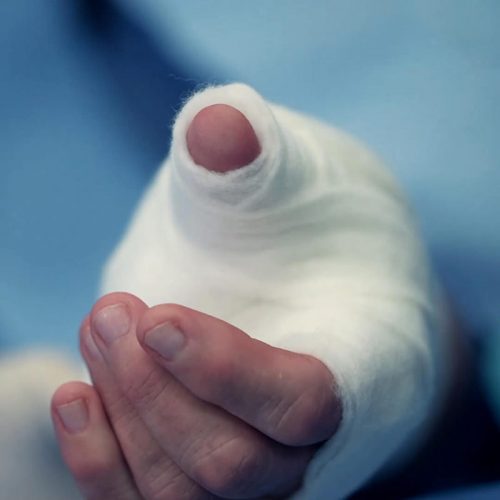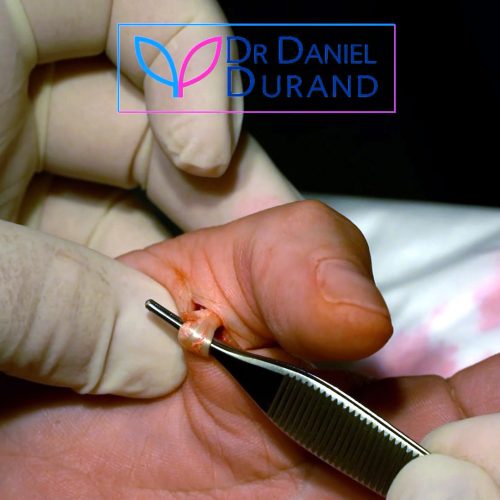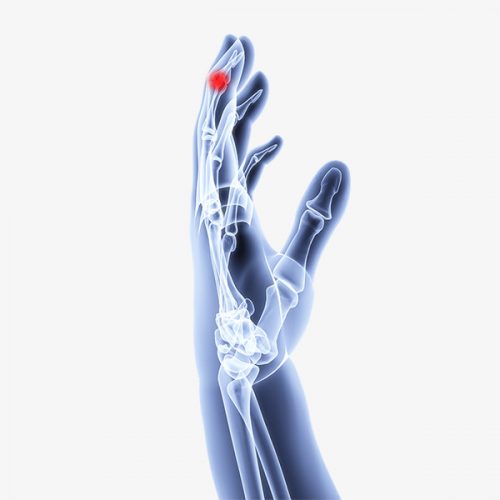

Mallet Finger


WHAT IS MALLET FINGER?
Mallet finger is an injury to the thin tendon that straightens the end joint of a finger or thumb. Although it is also known as “baseball finger,” this injury can happen to anyone when an unyielding object (like a ball) strikes the tip of a finger or thumb and forces it to bend further than it is intended to go. As a result, you are not able to straighten the tip of your finger or thumb on your own.
SYMPTOMS OF MALLET FINGER
The finger is usually painful, swollen, and bruised. The fingertip will droop noticeably and will straighten only if you push it up with your other hand.
It is very important to seek immediate attention if there is blood beneath the nail or if the nail is detached. This may be a sign of a cut in the nail bed, or that the finger bone is broken and the wound penetrates down to the bone (open fracture). These types of injuries put you at risk for infection.
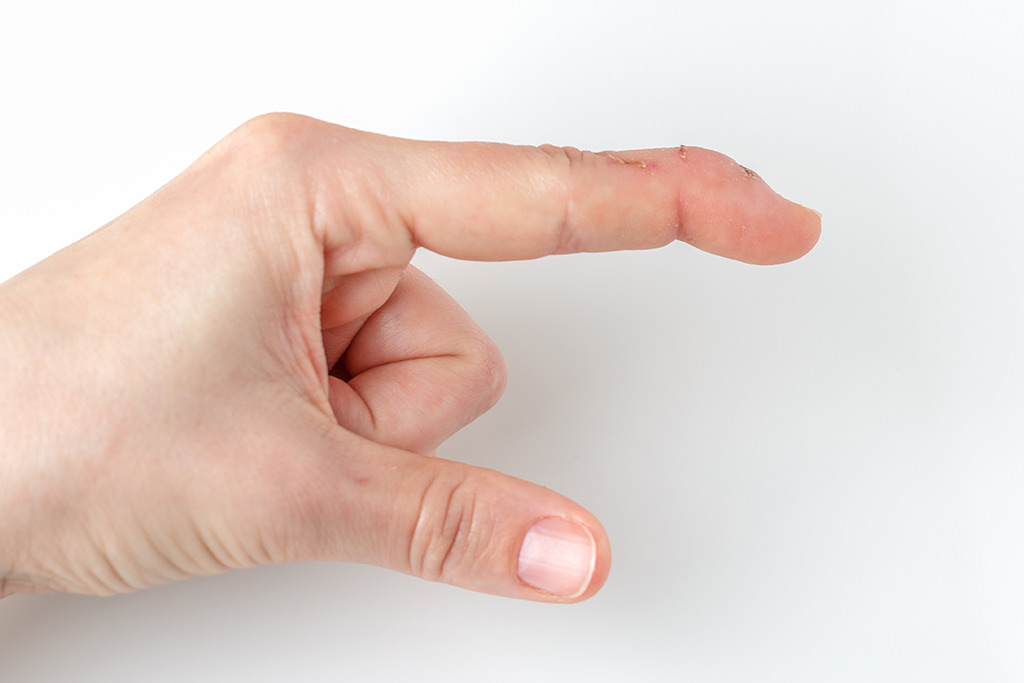
IF YOU ARE SUFFERING FROM SYMPTOMS OF MALLET FINGER AND EVALUATING YOUR TREATMENT OPTIONS, SCHEDULE A CONSULTATION WITH DR. DANIEL DURAND TODAY.
WHAT CAUSES MALLET FINGER?
Mallet finger is a deformity of the finger caused by damage to the extensor tendon.
The extensor tendon is the tendon that allows the tip of the finger to straighten. When a ball or other object strikes the tip of the finger, the force causes the tendon to detach from the bone. The force of the blow may even pull away a piece of bone along with the tendon.
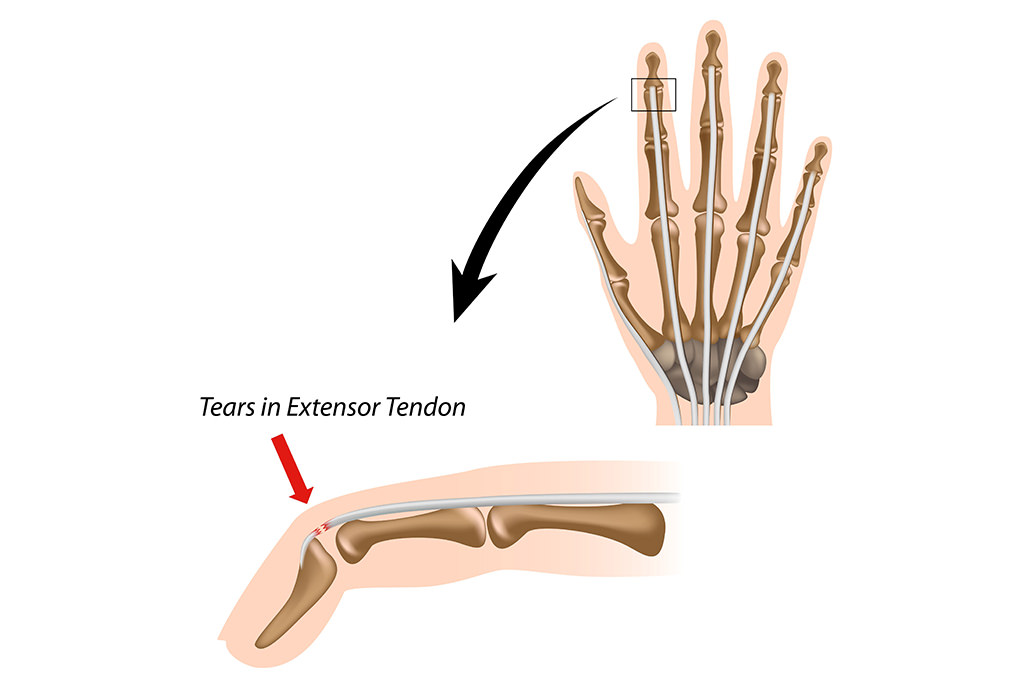
HOW IS MALLET FINGER DIAGNOSED?
- Physical Examination. After discussing your medical history and symptoms, Dr.Durand will examine your finger or thumb. During the examination, he will hold the affected finger and ask you to straighten it on your own. This is called the mallet finger test.
- X-rays. Dr.Durand will most likely order x-rays of the injury. If a fragment of the distal phalanx was pulled away when the tendon ruptured, or if there is a larger fracture of the bone, it will appear in an x-ray. An x-ray will also show whether the injury pulled the bones of the joint out of alignment.
WHEN SEEKING A DIAGNOSIS OR TREATMENT, IT’S BETTER TO SEE A DOCTOR SOONER RATHER THAN LATER. ONCE A CONDITION IS SEVERE, THE DISEASES ARE MORE DIFFICULT TO CORRECT.
EARLY INTERVENTION IS KEY TO AVOIDING PERMANENT DAMAGE. DEPENDING ON YOUR DIAGNOSIS, NONSURGICAL TREATMENT MAY BE AN OPTION.
HOW IS MALLET FINGER TREATED?
There are a few different procedures to help treat Mallet finger condition. Treatment varies depending on its severity and duration. Dr. Daniel Durand will take the time to carefully outline the various options available to you along with the benefits and risks associated with each procedure during your comprehensive one-on-one consultation.
NONSURGICAL TREATMENT
Most mallet finger injuries are treated with splinting. A splint holds the fingertip straight (in extension) until it heals.
To restore function to the finger, the splint must be worn full time for 8 weeks. This means that it must be worn while bathing, then carefully changed after bathing. As the splint dries, you must keep your injured finger straight. If the fingertip droops at all, healing is disrupted and you will need to wear the splint for a longer period of time.
For 3 to 4 weeks after the initial splinting period, you will gradually wear the splint less frequently — perhaps only at night. Splinting treatment usually results in both acceptable function and appearance, however, many patients may not regain full fingertip extension.
SURGICAL TREATMENT
Your doctor may consider surgical repair if there is a large fracture fragment, or the joint is out of line (subluxed). In these cases, surgery is done to repair the fracture using pins to hold the pieces of bone together while the injury heals.
It is not common to treat a mallet finger surgically if bone fragments or fractures are not present. Surgical treatment of the damaged tendon usually requires a tendon graft — tendon tissue that is taken (harvested) from another part of your body — or even fusing the joint straight.
Dr. Durand should be consulted in making the decision to treat this condition.
HAND CARE WITH DR DANIEL DURAND
NOT ALL HAND AND WRIST CONDITIONS REQUIRE SURGICAL SOLUTIONS. OTHER TREATMENT OPTIONS ARE AVAILABLE FOR LESS SEVERE ISSUES. IF YOU’VE BEEN EXPERIENCING MALLET FINGER SYMPTOMS, SCHEDULE AN APPOINTMENT WITH DR. DANIEL DURAND TODAY!


